
Away
Meet Québec’s Vanguard Winemakers
This Fall, Journalist Caitlin Stall-Paquet takes us on a tour of some of Québec’s Eastern Townships best natural wineries as they adapt to climate change and evolve with our taste for fruity ferments.
Text—Caitlin Stall-Paquet
Photos—Alma Kismic

Québec’s first vineyard, Côte d’Ardoise, was founded in 1979 in Dunham, 10 minutes from my hometown of Frelighsburg, a tiny village that hugs the Vermont border. Soon after that, L’Orpailleur opened its doors a little farther up the road and was quickly followed by others, turning the region into a budding wine destination.
Québec’s wines have sometimes been criticized as overly acidic, too light, and lacking expressiveness, but lately that reputation has begun to change. A new crop of creative and conscientious winemakers have tapped into evolving tastes; wine drinkers are thirsty for lighter, lower-alcohol options that are coincidentally easier to produce in our often-frigid climate.
Following a trend that began in the mid-1990s and accelerated greatly over the last few years, producers have taken a turn toward low-intervention models, letting the fruit and their colonies of yeast do their dance as freely as possible.
In Québec, the popular shift toward natural, unfiltered, and spontaneously fermented wines owes much to import agencies like Oenopole, which has worked hard to bring natural options to the province’s alcohol commission, the SAQ.
Though Oenopole doesn’t currently represent local winemakers, they’ve certainly helped to set the stage for their popularity.
“If current trends still favoured higher-alcohol, more structured wines, we might not be experiencing this moment, because it’s not what we’re able to produce,” says Charles Tarzi, Oenopole’s director of portfolio development and product commercialization. “I think the timing is good.”
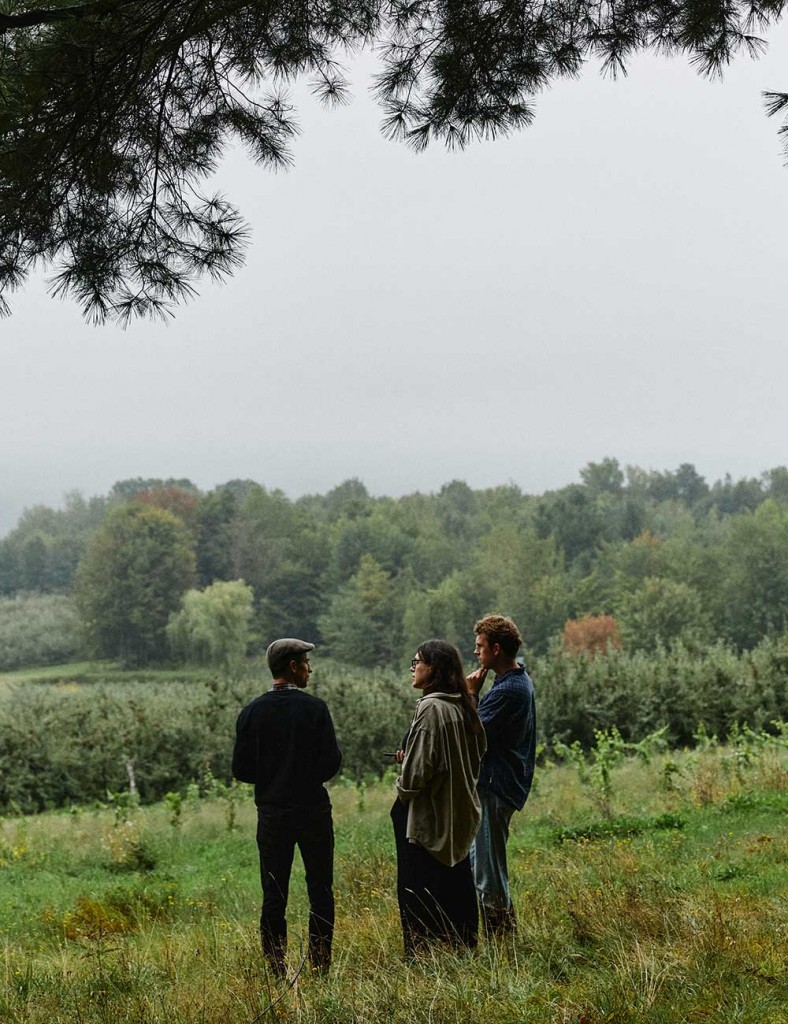
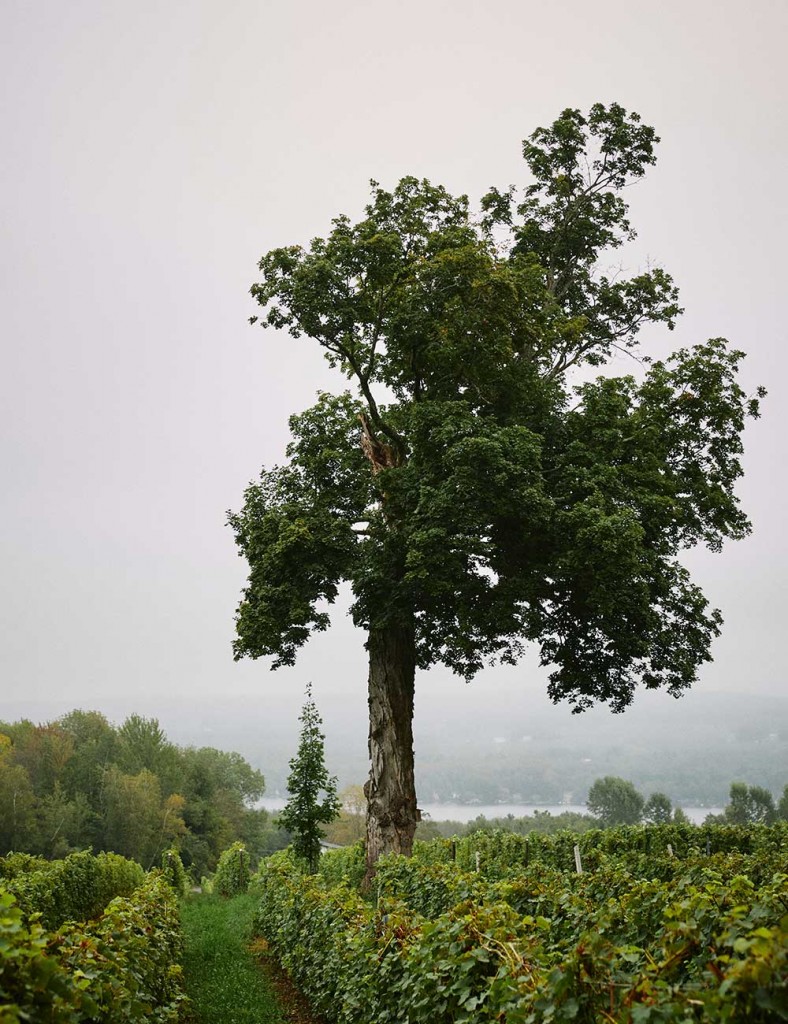
Apples to grapes
____
In early September, I travelled to Brome-Missisquoi to meet a number of local winemakers and sample the fruits of their labour. Each one takes a singular approach, but they all share strong environmental values and a commitment to working with the particular climate on their plot of land.
When the glaciers retreated from this southeastern section of Québec 10,000 years ago, they left a terrain of rolling hills and valleys in their wake. As a result, Brome-Missisquoi is now governed by multiple, subtly different microclimates, which accounts for the varied wines that local producers can make.
Whether they have organic certifications or other designations, all the winemakers I met have a deep understanding of the land they’ve chosen: the type of soil they’re planting in, the micro-organisms that call it home, and their highly specific set of meteorological challenges.
Some of the effects of climate change in the region are also creating unexpected opportunities.
“There’s been a major difference since the 1980s. We’ve gained 15 per cent heat during the season, which makes it possible to ripen Pinot Noir, versus in 1985 when we couldn’t,” says Zaché Audette-Hall, owner of Domaine l’Espiègle.
This increase in heat has generally led to drier summers, but heavy rainfall in 2022 served as a reminder of growing unpredictability as well.
The increased heat and dryness has motivated some producers to transform orchards into vineyards, as vines can better handle more aridity (up to a point, at least). While apples are emblematic of the region, they require steadier water supply. And, since orchard soils aren’t as overworked as corn or soy fields, there’s lots of life in the ground to help vines get a solid start.
Growing up, I played in these orchards, hiding behind their short trunks and twisted branches. It’s difficult to come to terms with thoughts of them getting chopped down because of harsh, unpredictable weather. And yet it’s exciting to see how producers are reinvigorating this region’s growing traditions, a sweet note with potential lasting power.
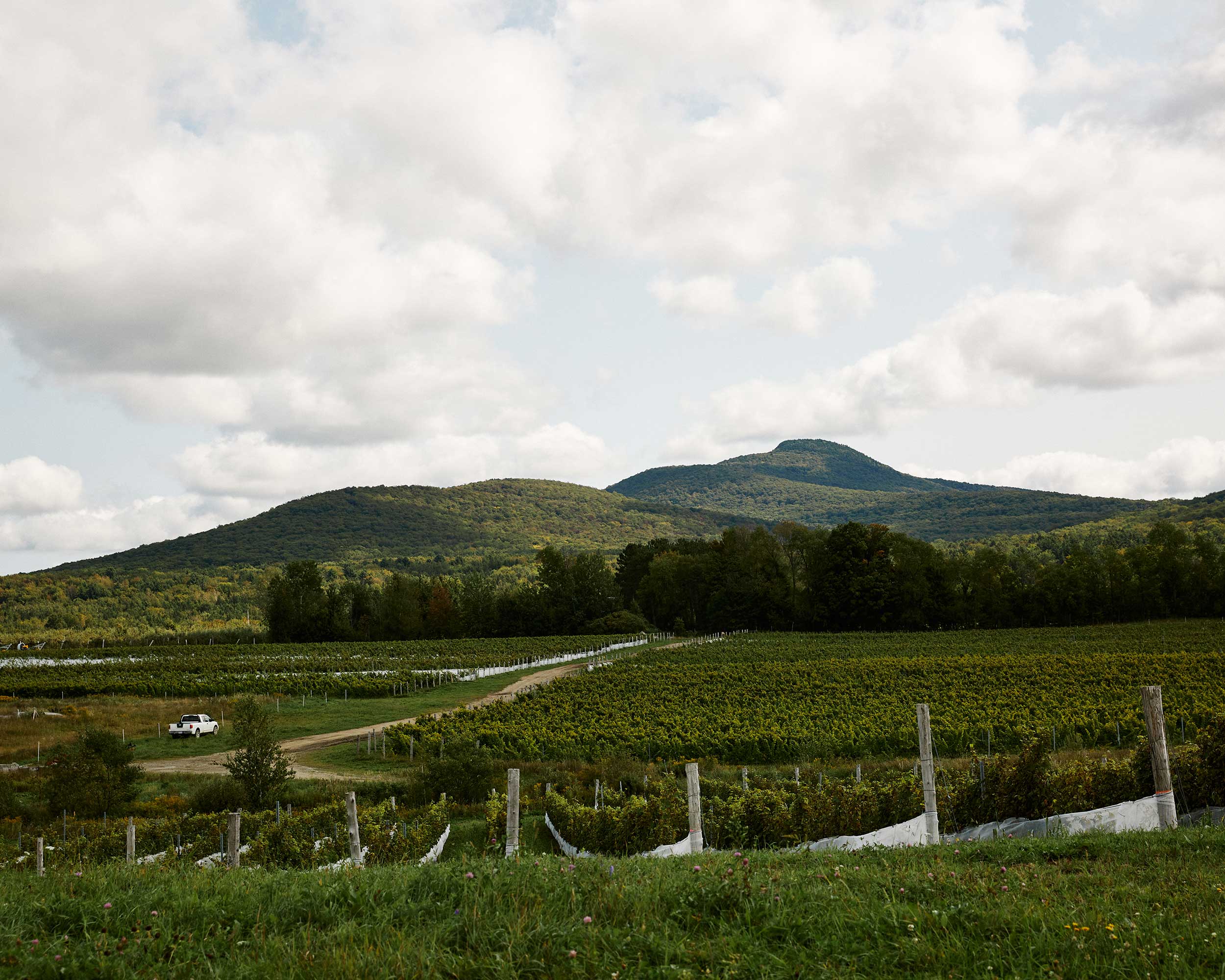
– Frelighsburg –
Maison Joy Hill
____
When I visit Maison Joy Hill, the emblematic Mount Pinacle, featured on some of the winery’s technicolour labels, is obscured by fog. I know it’s there, though. The peak inhabits my memory like a geological spectre.
I grew up on McIntosh Road, which is about three kilometres away if you follow the dirt roads, but was only a fraction of that distance when I’d cut through the orchard behind my old house — now owned by cider producers Louise Dupuis and Christian Barthomeuf from Clos Saragnat — to go play with my best friend.
With 50 hectares of land, half of it forested, there’s plenty of room to play for Justine Therrien and Julien Niquet, who bottled their first vintage in 2020. The unpredictability of the weather has confirmed the importance of building defenses. They are collaborating with a holistic agronomist, who taught them to use fermentations of forest litter to improve the vines’ vitality.
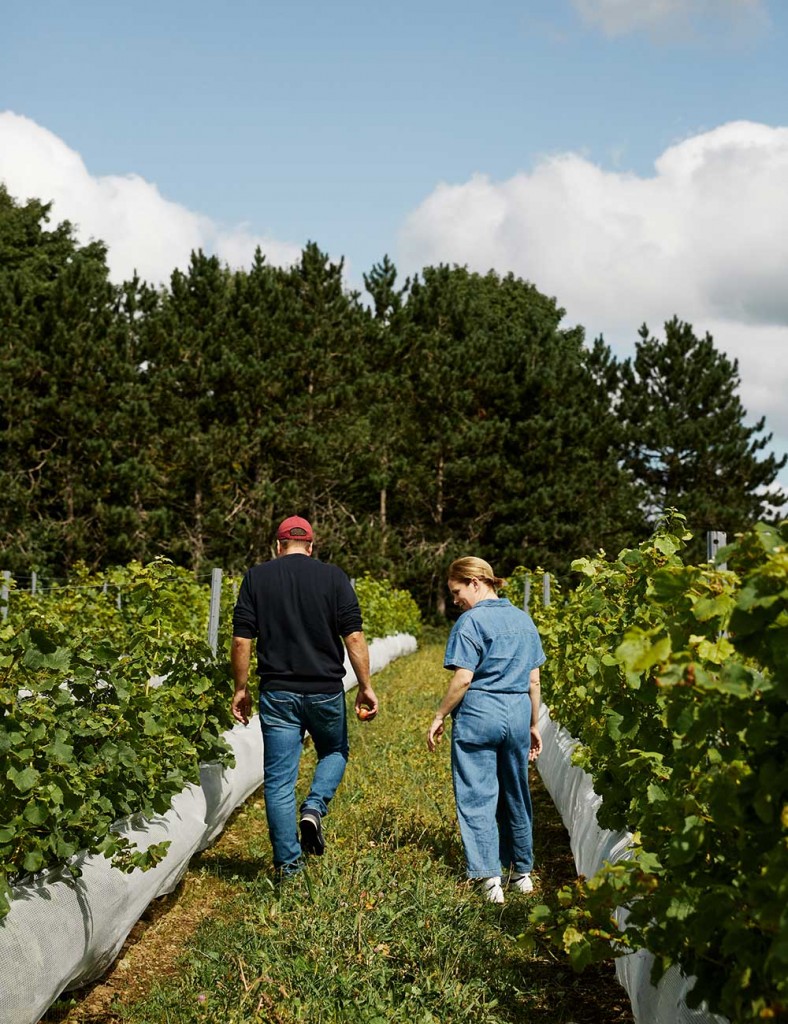
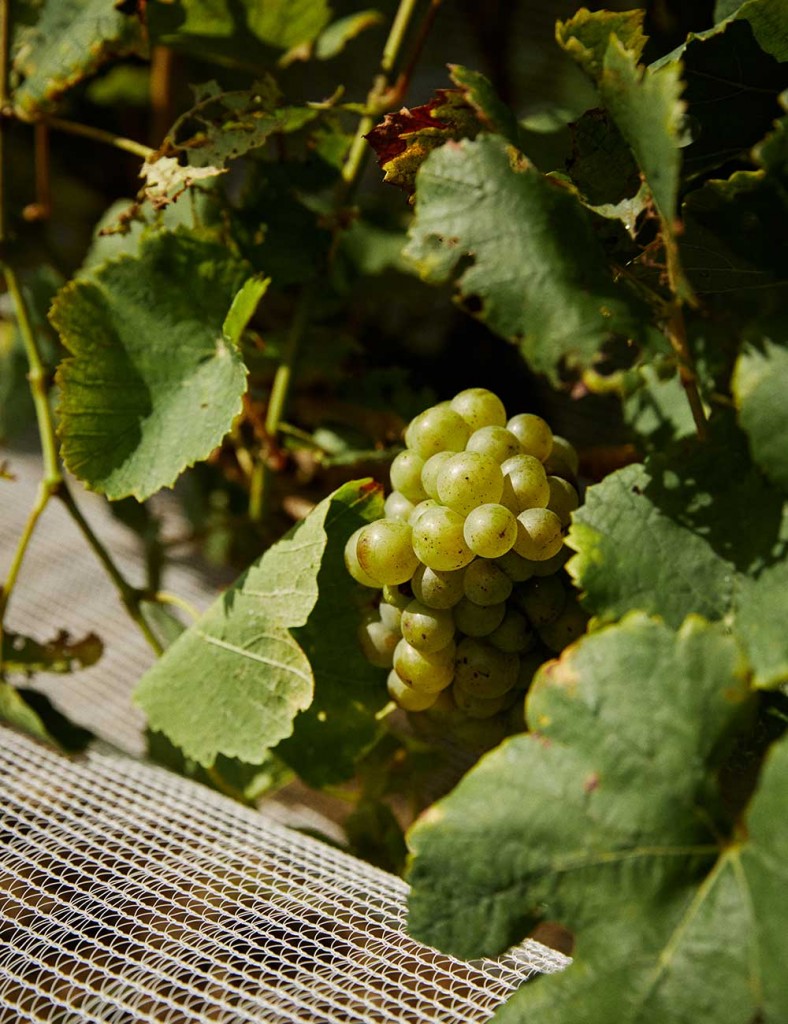
“The holistic way of working means this place is a whole; we are a part of it, the Pinacle is a part of it, and the 25-hectare forest is a part of it,” says Therrien.
Combining their backgrounds in Montréal wine agencies and beer brewing, they left the city to bring their dreams to life in 2017, planting 12,000 vines each year for three years. They now offer thirst-quenching varietals like Gamay in the Roche Mère, named after the bedrock that encourages their grapes’ ripening.

Terroir: Varied soil made up of sandy clay, silt, and schist, and chock full of metamorphic and sedimentary rock, makes for a rich starting point.
What to try: Aged for six months in concrete vats, their Bal des Oiseaux Chardonnay, with hints of pear and fresh green-apple acidity, is a thirst quencher that also has the potential to age gracefully in your cellar.
Mark of distinction: Nearby Pinacle Mountain, depicted by Montréal artist Josiane Lanthier on the winery’s labels, brings cool fronts, meteorological pockets, and geological distinctness.
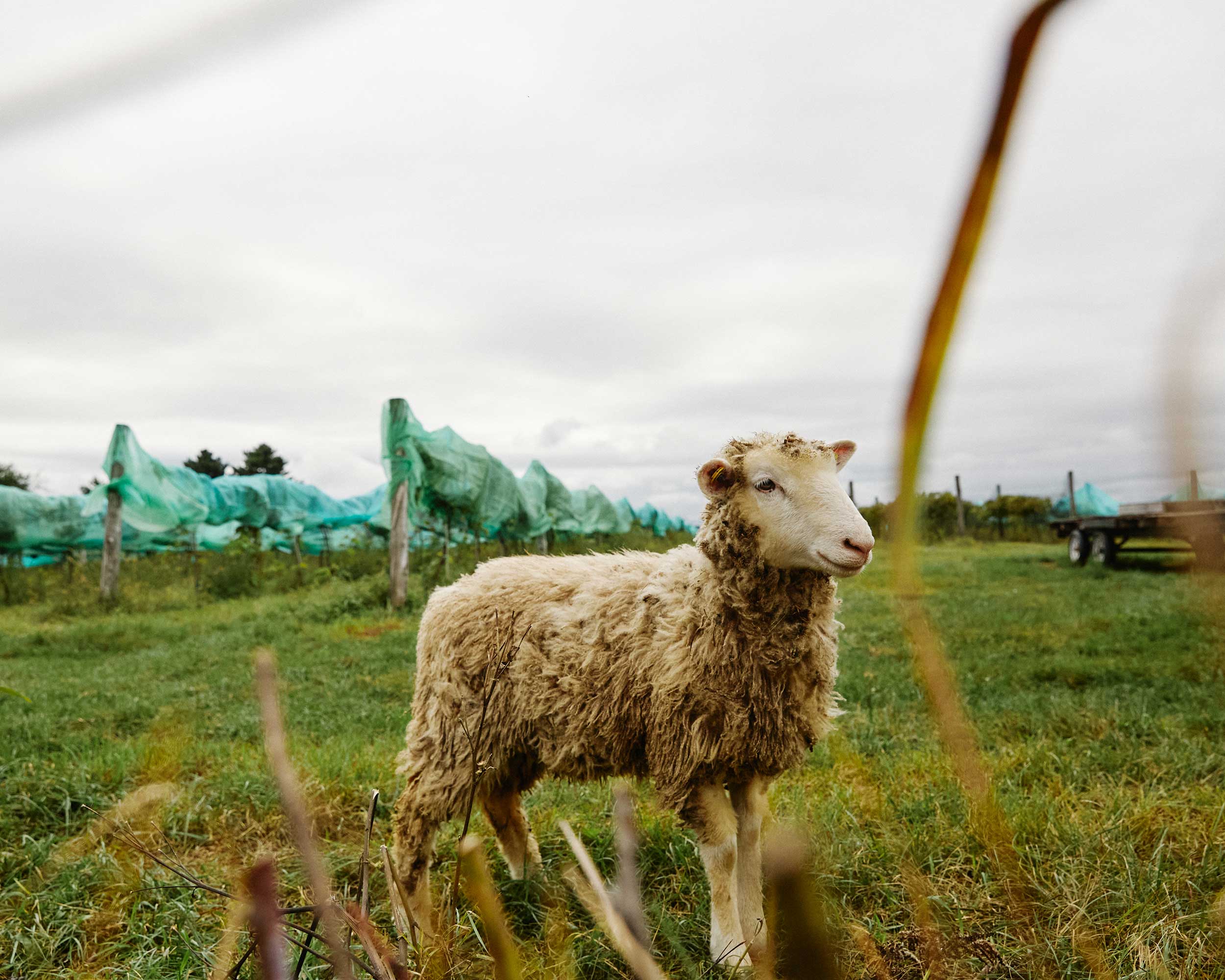
– Brigham –
Vignoble la Bauge
____
The second-generation owner of this farm-turned-vineyard, Simon Naud, arrived at his current organic method by process of elimination. Rather than setting his sights on specific products, he kept his mind open to what grew best on his 10 hectares.
Over the years, Naud has done away with many viniferas and focused the majority of his energies on Gewürztraminer and Cabernet Franc, along with tougher Frontenac that do best when covered with a layer of hay and geotextiles through the winter.

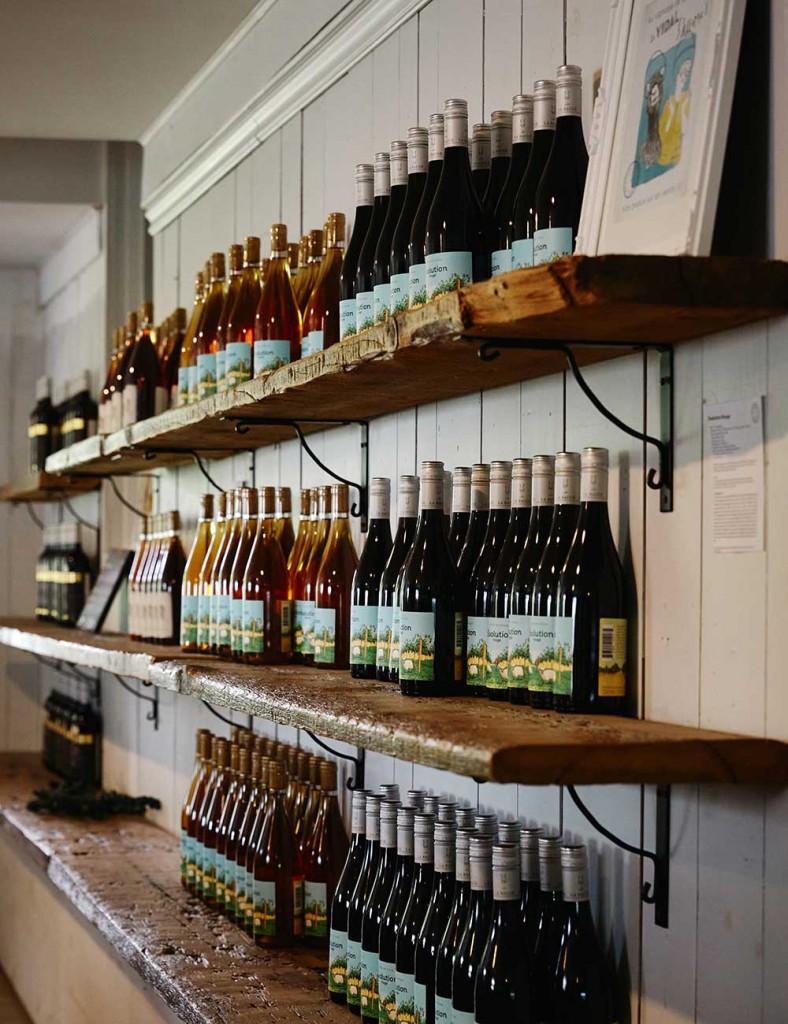
Like others in the region, Naud has seen the tide turn for Québec wines since his father started growing vines in 1986.
“People have more openness toward local products, as well as a desire for newness, so making fresh, drinkable wines is no longer something to be ashamed of,” Naud says.
“It’s too hot in France now; they often produce wines with 15 per cent alcohol, so when people taste something that’s 12 per cent, light, fruity, and refreshing, they like it.”
To bring more visitors to his vineyard, Naud’s father adopted an agri-tourism model that once included keeping boars on the premises, from which they made dried sausage and terrines to accompany the wines.
Naud eventually decided to only raise animals that are beneficial to his winemaking process: 15 or so sheep per hectare help keep grasses trimmed and provide natural fertilizer since the winery went organic in 2016. Over the last 36 years, the winemaker has changed with the times, but didn’t go it alone.
“It was a friendly, welcoming field that was emerging, a small industry that we were trying to bring to life against all odds. Against the weather, against legislation, and against the Québécois population that constantly claimed we only made crap,” he says.
Terroir: Slate lurks beneath light, crumbly schist and gravel, surrounded by gigantic rocks dropped off at the end of the last ice age, along slight forest-ringed inclines.
What to try: The surprisingly pineapple-forward Évolution Blanc has acidity-cutting vanilla and honey notes, made with Frontenac Gris, Frontenac Blanc, and Vidal. It’s a surefire future apéro classic.
Mark of distinction: Working with an agri-tourism model from the beginning means visitors can still pop into this vineyard’s shop to get their hands on the wine straight from the source.
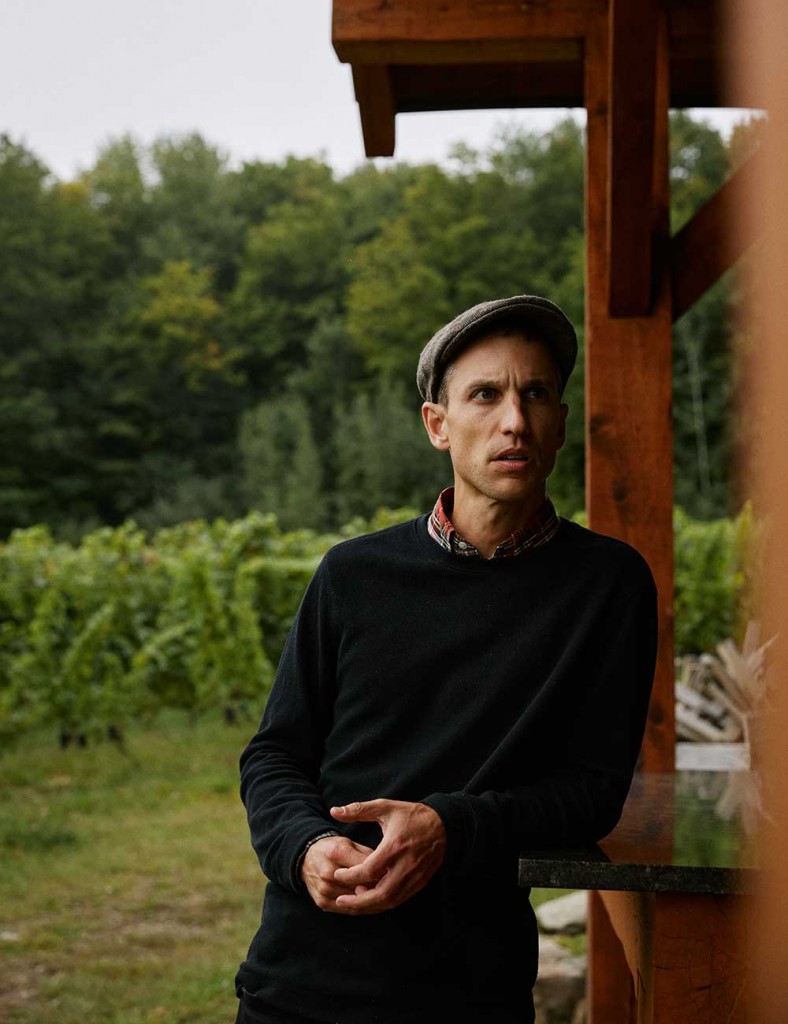

– Dunham –
Domaine l’Espiègle
____
The Dunham wine heartland has a new producer grabbing attention beyond the region’s borders. On a tract facing Lake Selby and the Pinacle Mountain in the distance, Zaché Audette-Hall — my friend since kindergarten — released his first vintage in 2020, from grapevines he’d planted in a cleared orchard on well-drained land next to his parents’ house.
For Audette-Hall, raising Gamaret, Chardonnay, and the notoriously finicky Pinot Noir has put his knowledge of his grounds to the test. He’s always tinkering with solutions that allow him to have as little impact on soil as possible, keeping long-term sustainability front of mind.
He has learned that letting flowering crops bloom early in the season attracts more insects, like miniscule acarids. Allowing peripheral plants to grow a little wild around the vines encourages good species to fight more nefarious ones that weaken plants and pave the way for diseases.
At the foot of the hill, Audette-Hall shows me a plot of Chardonnay grapes that grow above a uniform bedrock two to three metres deep. The shallow soil creates moderate hydric stress: the plant reacts to lack of water by focusing its efforts on developing grapes rather than greens. He points out this variety’s well-known capacity to transmit terroir, purifying as it grows and letting place shine through.
The resulting wine, called Aube à l’Est, has a delicate yellow hue. With its balanced acidity and the right amount of zesty crispness, this Chardonnay is nothing like the over-oaky, butter-heavy versions that often give the grape a bad rap.

Terroir: A southeast-facing hill means lots of sun early in the day and geographic protection from spring frosts, while dips in the schist, silt, and sand-dominated earth make for warm zones.
What to try: Gamma-Rays layers Gamaret, Gamay, and Pinot Meunier grapes and brings forward suave black fruit with herbaceous notes and enough structure to be paired with hearty meats.
Mark of distinction: Keep your eyes open for their colourfully illustrated bottles, which have become a fixture on Québec’s wine lists and store shelves.
– Saint-Ignace-de-Stanbridge –
Les Soeurs Racines
____
At Les Soeurs Racines, 20 minutes down the road from Domaine l’Espiègle, Sophie Bélair-Hamel has found that winemaking that respects the environment is the only way to go:
“It’s more work and you have less control, but the earth doesn’t like us anymore. And if we keep going down that road … fungicides, pesticides, and synthetic products will no longer be effective.”
Bélair-Hamel crunched the environmental numbers before getting into business. While completing her master’s in environmental studies, she learned that organic wine production gives back to its ecosystem, while more traditional production costs thousands of dollars in remediation.
After years of tending to vines, she and her partner, Frédéric Ouellet-Lacroix, filled their first bottles this summer. With a background in sommellerie and restaurants, hospitality came as a logical extension for the pair. They started planting vinifera vines in 2017, and they’ve grown well in the sandy loam and gravel soil,
Though mostly interested in so-called Old-World varietals, the pair has cleverly planted heartier hybrids like Frontenac Gris around the more delicate plants, like a leafy fortress against disease.
Terroir: The soils dominated by schist, sand, and gravel are complemented by a warmer microclimate and a long-established agricultural tradition in the area.
What to try: Once they hit the shelves, keep your eyes peeled for their Melon de Bourgogne, Gewürztraminer, and Optima-based bottles.
Mark of distinction: Stay over with friends at their beautiful inn and enjoy a complete culinary experience that includes local, farm-fresh, and seasonal dishes.

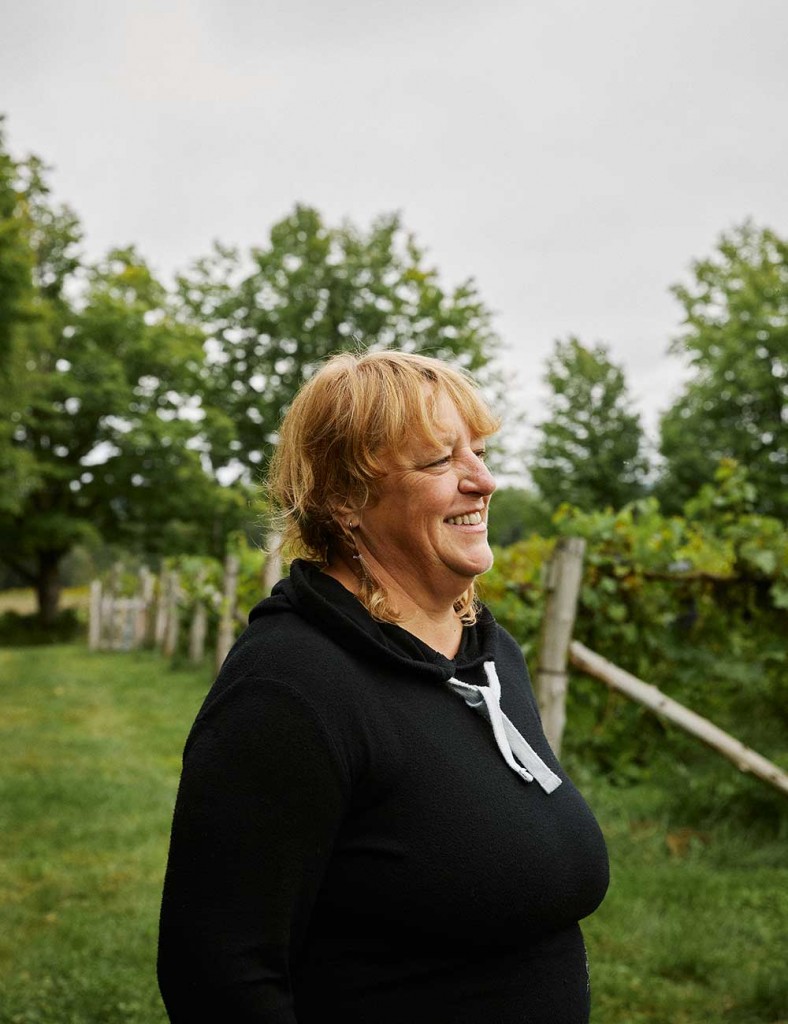
– Saint-Armand –
Vignoble Pigeon Hill
____
Just down the road, at the organic winery Pigeon Hill, Manon Rousseau and Kevin Shufelt started selling their goods in 2008. They were the first in Québec to plant hybrid Marquette grapes, which were developed at the University of Minnesota to be more resistant to cold and diseases like mildew.
From the moment they started 24 years ago, these producers have been adamant about respecting both their environment and the organic wines they make, ensuring that sulphites never touch their final products.
The pursuit of the highest environmental standards has led them to adopt a permaculture model. Sheep graze on their lands, including their mascot, Big Mouth, who adorns their flagship label. The sheep aerate the ground with their hooves, keep grasses in check, and provide natural fertilizer for the vines.

Terroir: With an extra-warm location in the Brome-Missisquoi area, on land marked by slight inclines, these well-drained alluvial grounds are ideal for planting.
What to try: The Le Mouton red made from Marquette grapes is aged for eight months in oak barrels, becoming slightly peppery and spicy, with light tannins — a good match for your next burger.
Mark of distinction: Unlike many of their counterparts, Pigeon Hill leaves behind Old-World viniferas in favour of hybrid grapes that fare better in the Nordic climate.
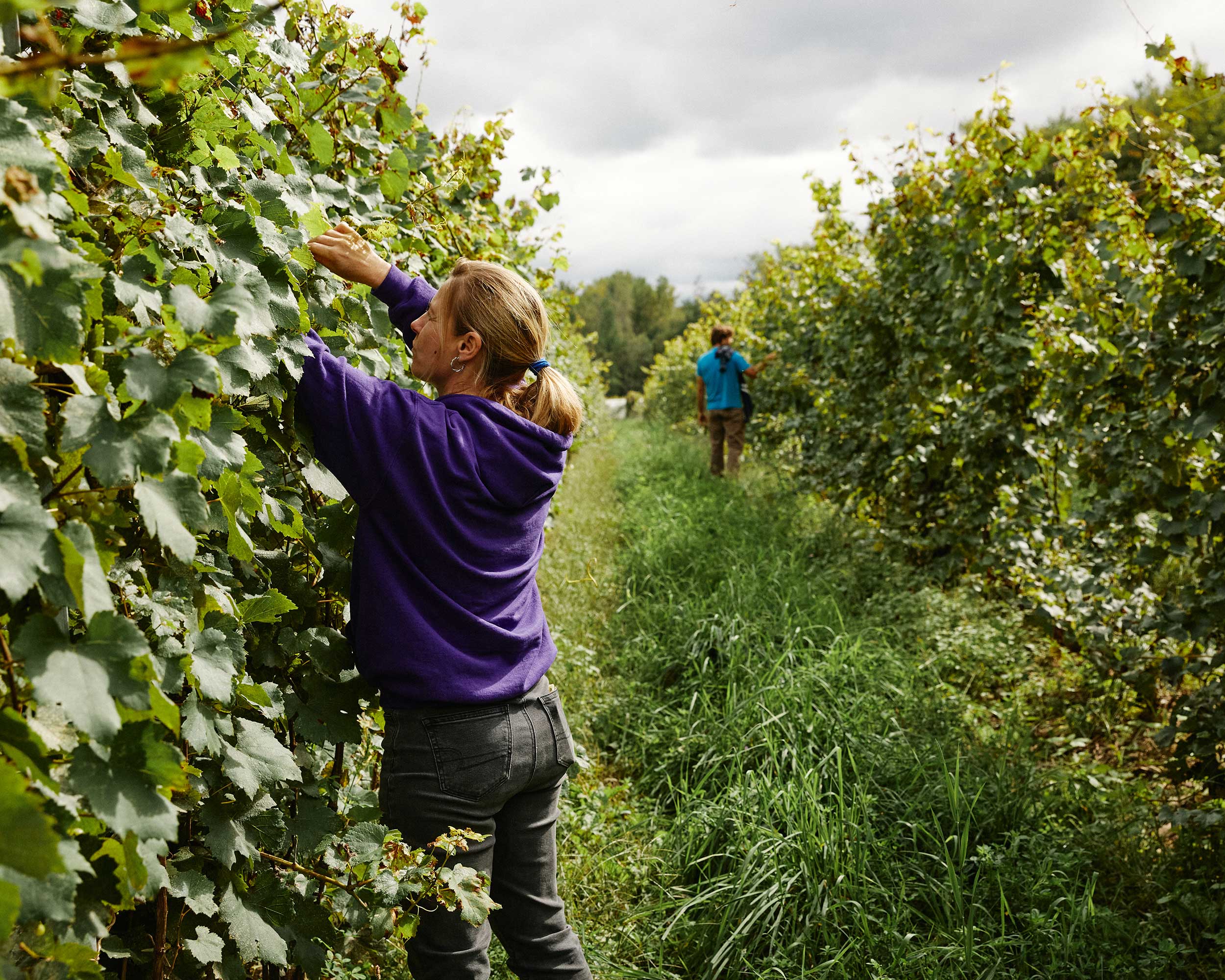
Véronique Hupin and Michael Marler, owners of Les Pervenches.
– Farnham –
Les Pervenches
____
Véronique Hupin and Michael Marler are the brains behind Les Pervenches in Farnham, often considered the best vineyard in Québec. There, micro-organisms do their fair share of work in organic and biodynamic production.
The challenges of obtaining these certifications led the pair to develop a deep relationship with their soil. They have learned to harvest the right plants, like nettle, at the right time for brewing teas that help them heal and protect vines with nature’s help.
I ask Marler how they deal with invasive insects like the Japanese beetle within the vineyard’s organic structure. “Meditation,” he answers.
Together, we stroll along their Seyval, Chardonnay, and Zweigelt-lined rows planted with clover, buckwheat, and nitrogen-fixing legumes as a natural substitute for fertilizer.
Hupin and Marler acquired the land and took over an existing vineyard in 1996. Its view of the mountains is inscribed in an undulating line on their label. They wanted to showcase just how good Québec wines can be if you remove additives and leave the wine unfiltered.
The duo are continuously broadening their knowledge of how to team up with microscopic beings in their soil for the best yields and unforgettable wines.

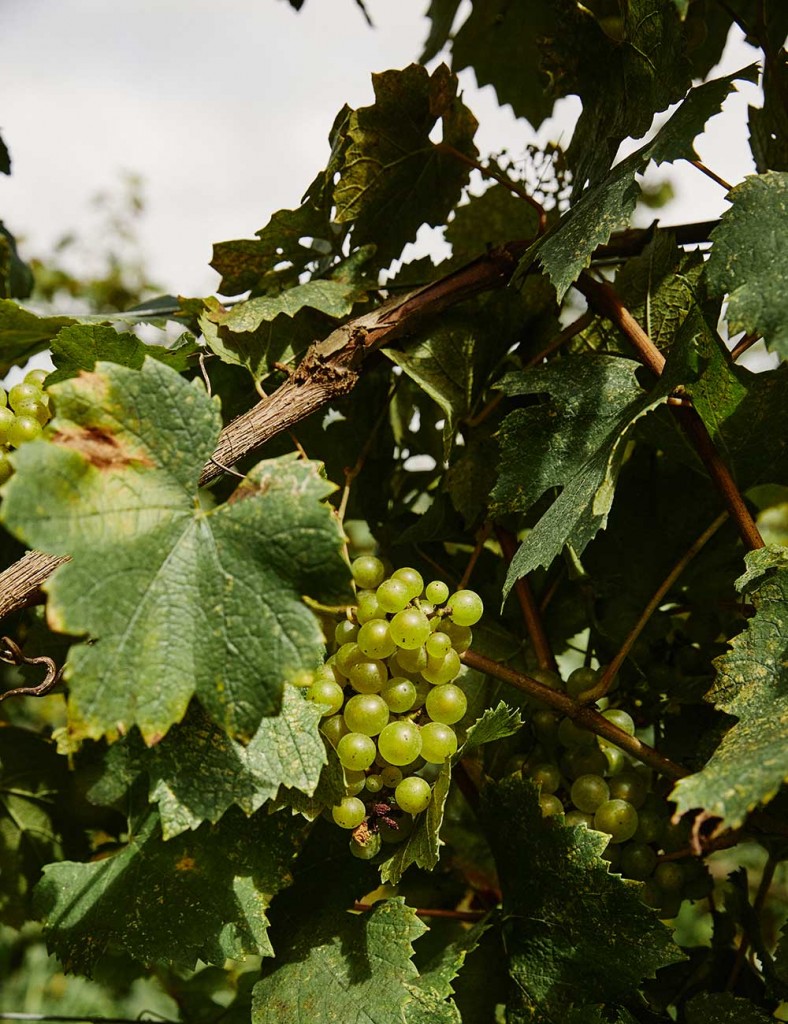
Terroir: With gravelly areas adjacent to sandy clay and silt-forward zones, every vine has its place on these four hectares.
What to try: The unfiltered, sulfur-free Pinot Zweigelt, with the smoothest of tannins and earthy notes lurking beneath fresh red fruit, is dangerously drinkable.
Mark of distinction: As pioneers of biodynamic winemaking in Québec, with an organic certification to boot, these producers see their vineyard as a whole entity, with natural compost sustaining soils and not a chemical or pesticide in sight.
***
Though their popularity has shot up in recent years, outputs at these vineyards remain small, and getting your hands on bottles can be tricky. This is why Sutton’s Réserve Naturelle Caviste was received with open arms by wine lovers in 2021.

After the shuttering of beloved Montréal music venue Le Divan Orange, two of its owners, Lionel Furonnet and Adèle Prud’homme, set their sights on other passions.
“I ended up kind of doing what I was doing before,” Furonnet tells me. “I was, and am, in charge of programming … There’s an aspect of bringing people together and showcasing the work or creation of artisans.”
The shop stocks about 20 per cent Québec products, including many from the winemakers I met, who sometimes drop in for tasting events. The pair also make their own cider called Turbulence, using wild apples and Joy Hill’s Gamay grape skins: a fitting symbiosis of the area’s apple and grape coexistence.
Bottled sunshine
____
As I was reminded by the foggy and rainy weather during my visits, it’s not always sunny in these parts. Slopes and valleys can be hard to navigate, and cold fronts can roll in and settle with a chill on the vines.
This past summer brought more rain than the last five years combined in some places, often helping disease spread. In the end, the greatest challenge local winemakers face is unpredictability in their distinct tiny ecosystems.
There’s great promise here, though, for the area’s now-emblematic vines and the agile problem solvers who tend them.
Despite the clouds, Joy Hill’s sparkling Riesling, named Freli en Juillet, remains like effervescent bottled sunshine. It gave me a pang of childhood nostalgia for swims in valley streams and melting Popsicles. As frozen treats have given way to liquid ones, I’m grateful for this long, slow sip of the place I once called home.
Three parks for uncorking
____
Surrounded by a mellow walking path along a rocky stream, this Lac-Brome park makes for a serene forest stop.
With benches and picnic tables and informative panels about local wildlife, you’ll get a side of education with your idyllic hangout.
A stone’s throw from Vignoble La Bauge, enjoy a glass accompanied by the sounds of the nearby rushing Yamaska River.
Caitlin Stall-Paquet is a Montréal-based writer, editor, translator, and occasional forest dweller. Her work has been published in the Walrus, CBC, the Globe and Mail, Elle Canada, the Narwhal, Toronto Life, Canadian Geographic, the Toronto Star, Growers, and enRoute.
Never Miss Another Issue
Two issues per year
25% OFF previous issues
Free Shipping in Canada